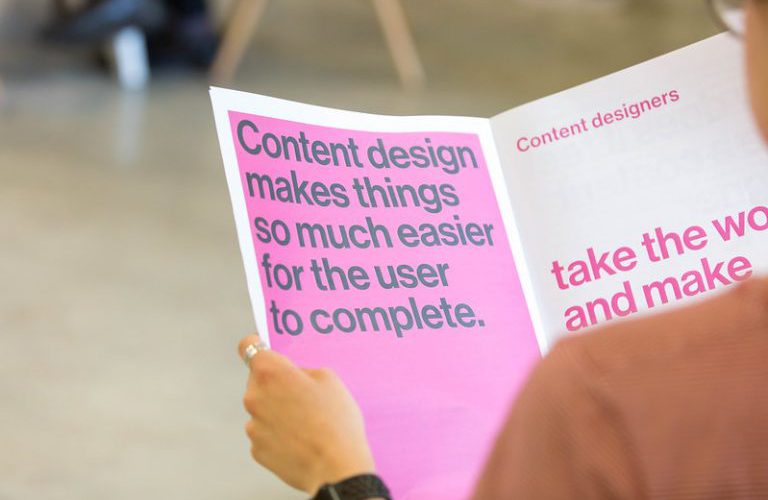Content Design
An overview of the Content Design process for both the public and private sectors focusing on the importance of user-centred research, journeys and style and standards in the right place and in the best format.
‘What is a content designer?’ Padma Gillen from the Cabinet Office, Government Digital Service
A content designer is a bit of a posh way of saying a ‘web editor’. But the implication in calling it content design is that it’s a bit of a broader remit than the standard web editor.
We’re not thinking in terms of what we want to tell people, we’re thinking in terms of what people want to know. Writing something simply and logically and structuring it in a way that the user doesn’t even have to read it properly, it just goes in, because it’s so intuitive, that’s the ideal.
‘What makes a good content designer?’ In order to write something simply, you’ve got to really understand it. And you’ve got to understand what’s relevant and what you can leave out.
How do you take the user on a journey to get to being able to take an action based on this information. Because most users are not just browsing, they don’t just want to educate themselves, they want to be able to do something.
A lot of it is relationships with people. So being able to stay in a positive relationship with all kinds of different people when there are all kinds of pressures that can encourage polarisation and not getting into that space ~ that’s a good quality to have.
An ability to work with fluidity and unknown quantities, and to be able to jump when you need to jump. Sometimes we get very short amounts of time to make changes that have got national consequences. So to be able to be that space and not fall to pieces is handy.
Content Design is comprised of 5 key steps
1) Content Discovery
2) Writing and Reviewing
3) Measuring success and SEO
4) Content Taxonomy
5) Content Design Work
These 5 steps are expanded below in a little more detail
Content Discovery involves focused desk research for language discovery. Identifying user needs from research and data. Mapping user journeys. Identifying missing user needs content and why. Sketching content solutions. Identifying content formats that meet user needs.
The Content Discovery phase includes user research and data analysis; creating a virtual ‘discover wall’; sketching sessions for content solutions; creating content patterns to log content formats and approaches; presenting ideas to the group.
Writing and Reviewing: Write content from user needs. Structure a page by prioritised needs. Play with the tone of voice. Review content in pairs and as a team. Pick the right format for the content. Organise content into a taxonomy.
Measuring success and SEO: Choose the data that’s useful for different types of content. Differentiate between success and value. Understand how user intent is part of successful content. Look at the relationship between user intent and relevance in SEO.
Content Taxonomy: Develop a content taxonomy. Get from a taxonomy to an information architecture (IA). Content hierarchy and organised content.
Content Design work: Creating content as part of the overall user experience. Making yourself heard in a bigger team. Selling content into the organisation. Content design jobs

